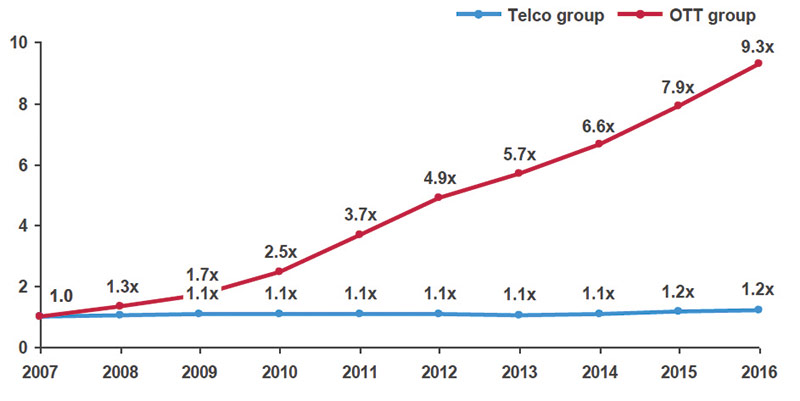Waking Sleeping Giants: Timely Revisiting Corporate Strategy

A discussion by Franklin Djohan, Portfolio Manager of Private Portfolio Managers
It is not uncommon for large incumbent companies to fall victim to change from external and internal factors, lacking the flexibility and the adaptability to respond to rapid changes in technology and market structure whilst addressing management change and complex operational issues. However, from time to time, industry leaders will rethink their strategy, and make necessary changes to be able to survive and thrive.
Telstra, Woolworths and Microsoft are recent examples of large incumbents where management has had to revisit and revitalise the companies core corporate strategy to ‘wake the sleeping giant’. The results of which are starting to show.
At PPM we think that Telstra, one of Australia’s leading incumbent Telco providers, strategy change is finally ‘ringing home’. As evident from the investor day on 2nd November 2017, company management has finally ‘answered the call’ to provide a much needed clarification of strategy.
The company’s large mobile business is facing increasing competitive pressure in a dynamically growing market. One must ask how a company with only two competitors (soon to be three) operating in a sector so central to everyone’s daily life is not able to command a greater share of their customers wallet? However, Telstra’s problem was not unique as illustrated by the chart below. The top three global telco’s also missed out on monetising the explosion of data that was picked up by companies like Google and Facebook. The question for Telstra’s management is what are they going to do about it?
OTT company revenue has accelerated since 2007, wile telco revenues have remained flat

Telstra management finally came to the realisation that they had to adapt their strategy in order to grow.
One of the key strategies management has highlighted was for the company to start tapping into the Over the Top (OTT) market. This initially sounded an alarm—that the company was going outside its core competencies, as OTT is dominated by technology companies like Google, Facebook, and Netflix not Telcos, and these technology companies are very agile and able to innovate, something that is not in Telstra’s DNA. However, Telstra is aiming to monetise something closer to home, the visibility and data it has from its network infrastructure.
One of the examples of this new venture is in the Cyber Security space, something that is very crucial in the hyper-connected world we live in now. Telstra’s Cyber Security space, something that is very crucial in the hyper-connected world we live in. Telstra’s Cyber Security Offering is more of a managed service, made possible since it can monitor any abnormal activity going through its network, a logical move for the company. Management has also refocused and revisited several other initiatives, which we believe, will if well executed put Telstra back onto a more competitive path.
There are other examples where companies were able to re-energise their business by enacting a reinvigorated strategy. The strategy can either consist of small iterations to the previous one, or be vastly different, as seen at Woolworths—this large incumbent grocery retailer was ‘caught sleeping at the wheel’, and let Coles and the emerging Aldi take market share. New CEO, Brad Banducci, was tasked to turnaround the business. His strategy was about going “back to basics”, and doing all the small things right from the bottom up. He brought the attention back to the customer, having the right products at the right price and, good store presentation, to name a few. Although it is still early days, the indication so far has been positive, with same store sales starting to pick up and Woolworths taking back some market share off its competitors.
Microsoft is another example of a large incumbent that has refocussed its corporate strategy with ongoing success. At Microsoft, revenue used to be highly dependent on its customer replacement cycle, hence unpredictable. To combat this, Microsoft implemented a subscriptions based business model. This allowed for more predictable earnings and control of the company’s product-lines to ensure they were always up to date.
Obviously having a sound strategy is only part of the story. While many factors contribute to the success and running of a robust business the importance of refocusing on your strategic plan cannot be underestimated.
Print this Article
